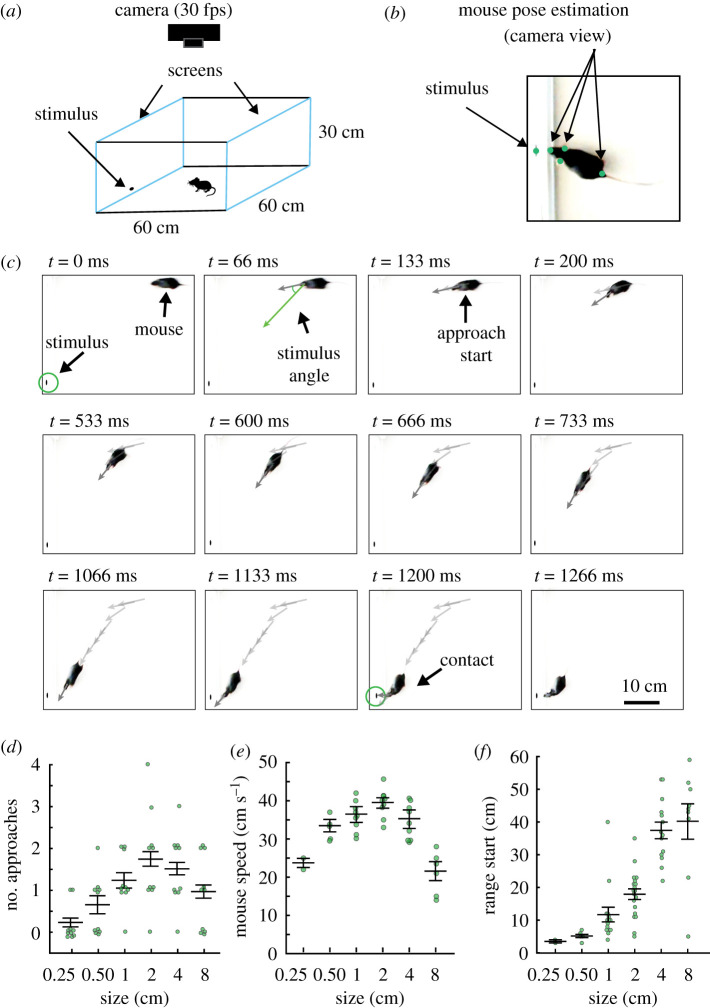Figure 1.
Naive mice preferably approach specific sizes of stationary, two-dimensional visual stimuli. Naive mice are habituated to the arena and handlers, but have not been exposed to artificially generated stimuli or live crickets. (a) Schematic of arena with video recording performed overhead. Two sides of a white acrylic behaviour box consisted of computer monitors displaying blank white screens. For experiments with stationary stimuli, ellipses of different sizes were presented one at a time, in one of three different locations along the azimuth in a randomized order. (b) Example frame from a recorded behavioural video. Relative positional information (range and stimulus angle) between the mouse and stimulus are calculated from these pose estimation data (electronic supplementary material, video S1, employing moving stimuli). The positions of the stimulus, the mouse's nose, ears and tail base were all tracked and are shown as green circles. (c) A representative approach sequence towards a stationary ellipse, highlighting specific moments surrounding a successful approach: approach start and contact. Arrows indicate the stimulus angle across frames. (d) Mean approach frequency for each mouse exposed to six different objective sizes of stimuli. n = 10 mice. (e) Mean locomotor speed for mice that approached stimuli. n = 2, 5, 9, 9, 9 and 6 mice each stimulus, respectively. (f) Mean range of approach starts at each objective size of stimulus. n = 65, r = 0.73, adjusted r2 = 0.487. Error bars are ± standard error of the mean (SEM) in all panels. (Online version in colour.)

